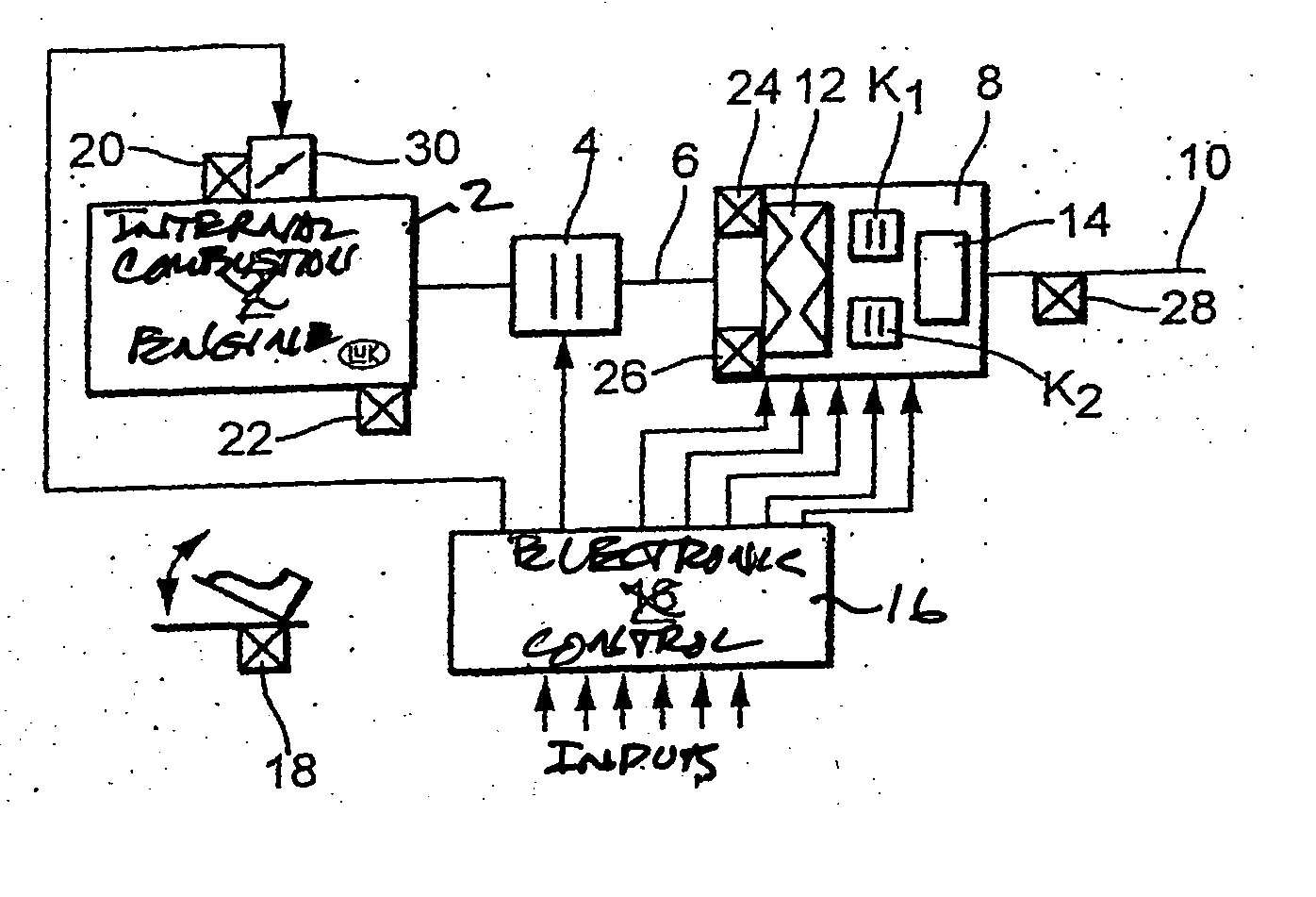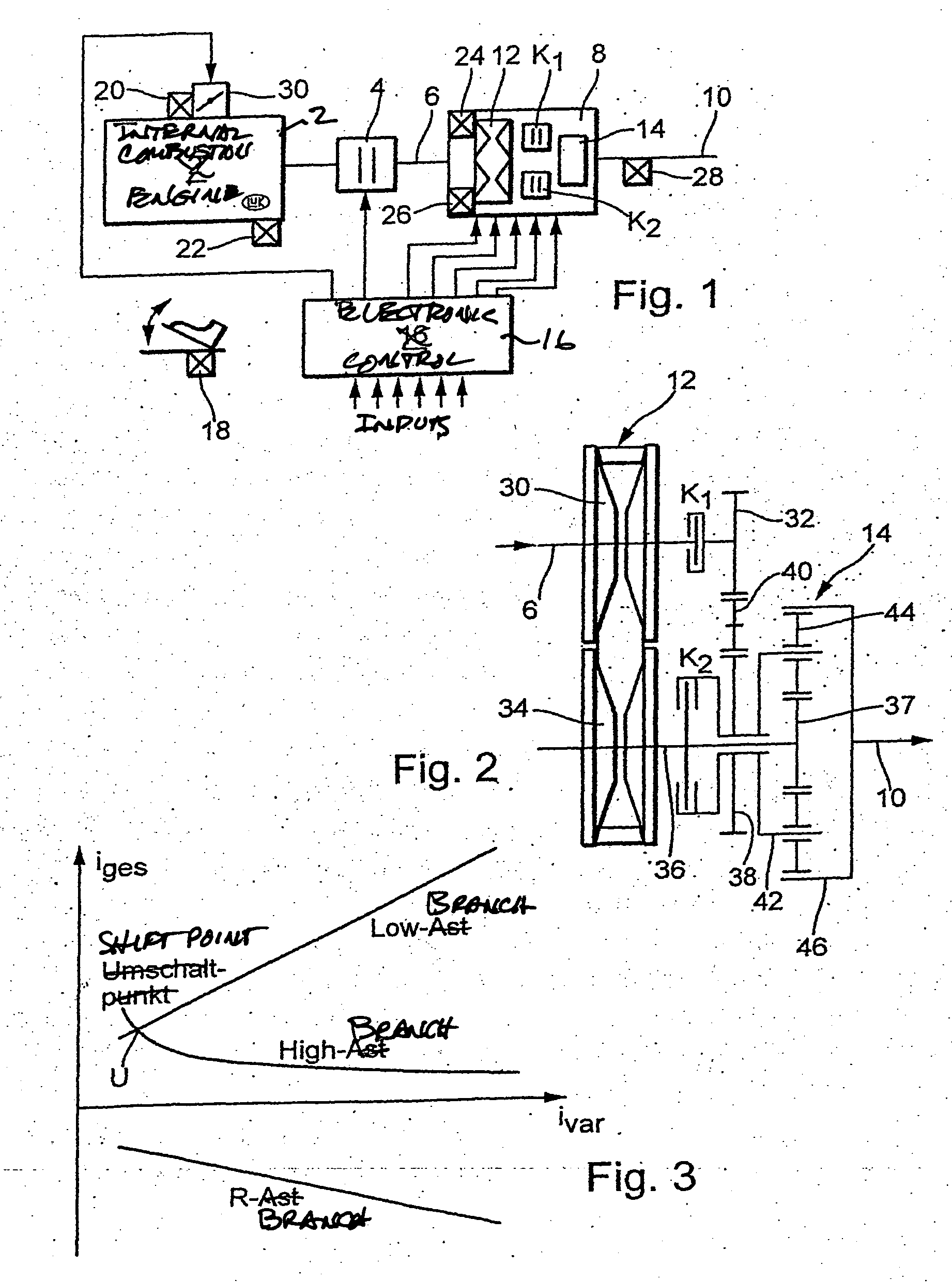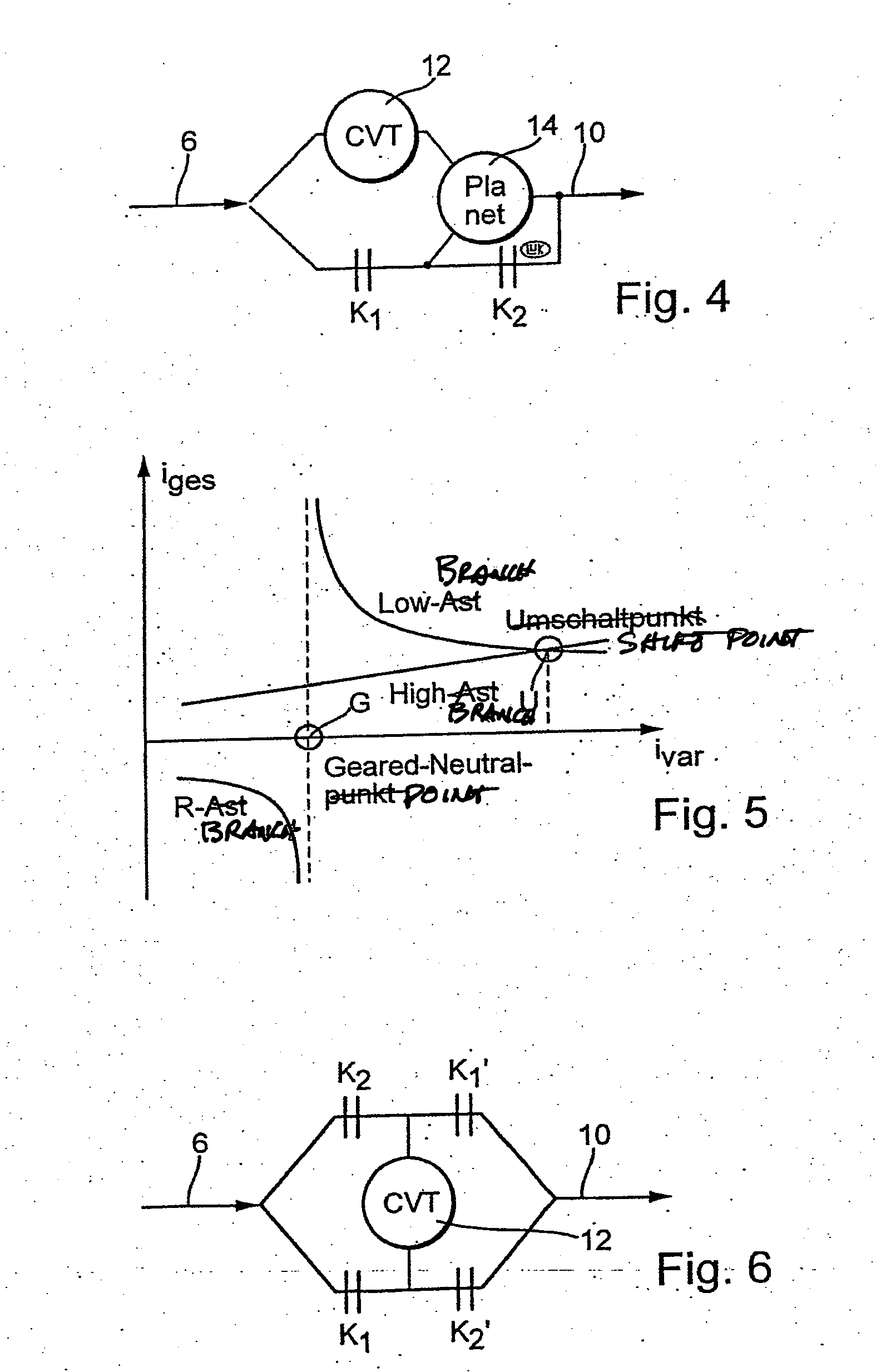Methods for regulating the gear ratio of an automatic power-branched transmission, and automatic power-branched transmission
- Summary
- Abstract
- Description
- Claims
- Application Information
AI Technical Summary
Benefits of technology
Problems solved by technology
Method used
Image
Examples
example
[0163] A shift into the unbranched region (low branch) is only allowed when the target overall transmission ratio iges target is larger by at least one Δ value than the transmission ratio at which the range shift U takes place with rotational speed equality.
[0164] When a range change takes place because the target transmission ratio is greater than the hysteresis region, the target transmission ratio should be approached in a suitable manner, for example, through linear reduction of the transmission ratio difference Δiges.
[0165] An alternative or additional solution to the problem can lie in that a range change takes place only after expiration of a predetermined time period since the last range change.
[0166] A still further or additional solution can lie in that a downshift into the old operating range only occurs when the driver expresses the wish for it through an appropriate signal, for example operates the accelerator pedal since the last range change, operates the service b...
PUM
 Login to View More
Login to View More Abstract
Description
Claims
Application Information
 Login to View More
Login to View More - R&D
- Intellectual Property
- Life Sciences
- Materials
- Tech Scout
- Unparalleled Data Quality
- Higher Quality Content
- 60% Fewer Hallucinations
Browse by: Latest US Patents, China's latest patents, Technical Efficacy Thesaurus, Application Domain, Technology Topic, Popular Technical Reports.
© 2025 PatSnap. All rights reserved.Legal|Privacy policy|Modern Slavery Act Transparency Statement|Sitemap|About US| Contact US: help@patsnap.com



